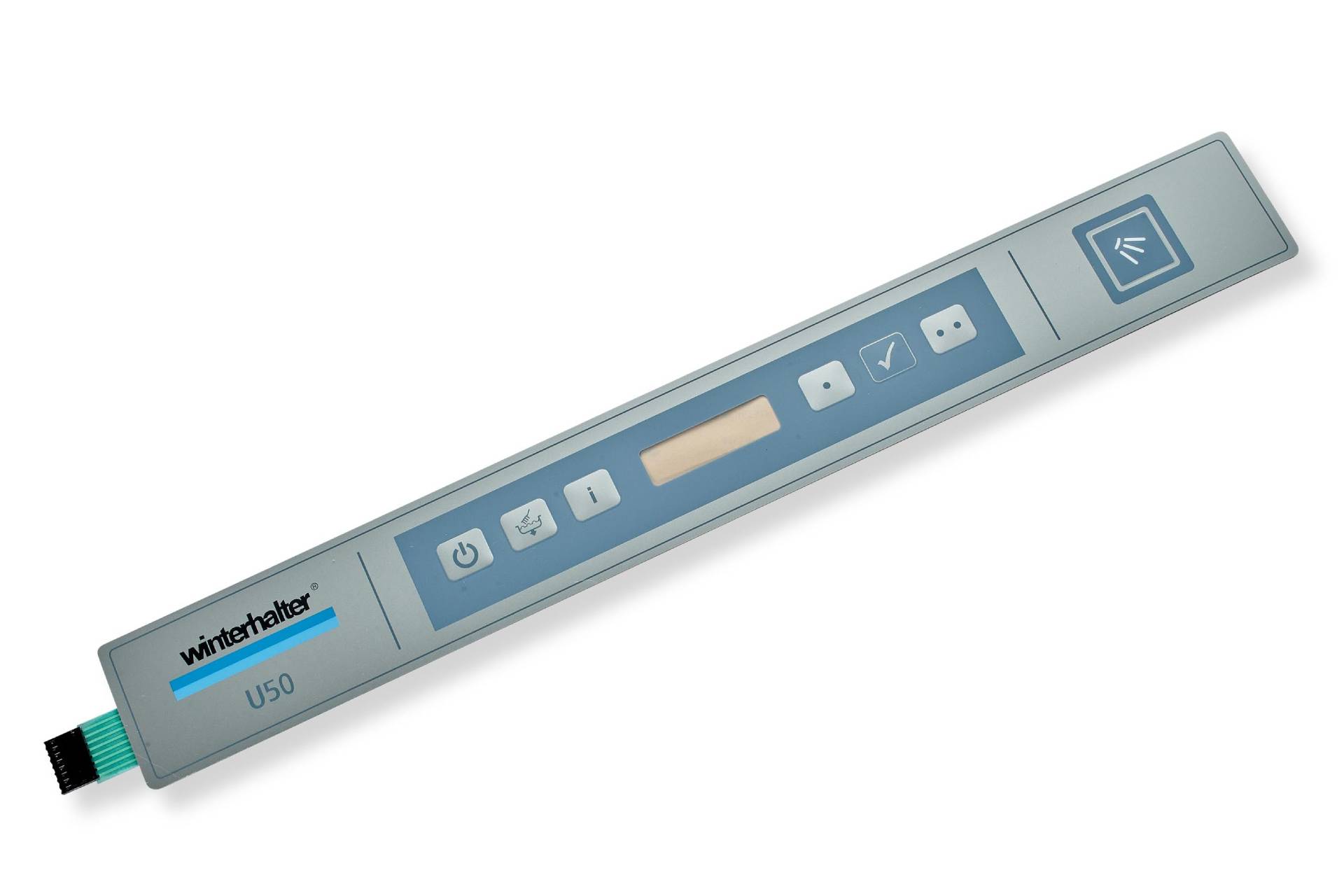Checking Out the Manufacturing Process Behind Rubber Keypads and Their Significance in Modern Instruments
Rubber keypads are pivotal in the performance of modern-day devices. Their manufacturing process entails careful option of materials and exact methods. Keypads are made to boost user interaction while making certain durability and dependability. Comprehending just how these parts are made discloses their significance across various applications. What factors add to their effectiveness, and how do these components influence user experience? The answers might improve assumptions of this daily innovation.
Summary of Rubber Keypads and Their Applications

Rubber keypads are flexible components extensively utilized in different electronic tools, ranging from consumer electronics to commercial equipment. Their layout allows for a tactile action, making them a suitable option for applications needing user communication. Generally discovered in items such as push-button controls, calculators, and medical tools, rubber keypads help with ease of use and availability.
In industrial setups, they serve vital functions in machinery and control board, where durability and resistance to environmental variables are crucial. The non-slip surface enhances grasp, promoting reliability in demanding problems. Additionally, their light-weight nature and personalized forms make it possible for producers to produce tailored remedies that fit particular demands. With developments in modern technology, rubber keypads remain to develop, integrating functions like backlighting and enhanced sensitivity. On the whole, their adaptability and useful benefits add considerably to the performance of various gadgets throughout numerous sectors.
Products Utilized in Rubber Keypad Production
Keypad manufacturing counts on a choice of products that improve both performance and sturdiness. The key product used in the production of rubber keypads is silicone rubber, recognized for its superb durability and versatility. This product permits keypads to endure duplicated pushing without shedding form or efficiency. Furthermore, polycarbonate elastomers (TPE) are usually made use of as a result of their ease of molding and capability to provide a soft-touch feel.
Coloring representatives, such as pigments, are incorporated to assure lively, lasting hues that boost visual appeal. Furthermore, additives like anti-UV agents and flame resistants may be blended into the rubber to boost climate resistance and safety and security conformity. The selection of materials directly influences the keypad's tactile reaction, longevity, and total performance in various tools. Ultimately, the careful option of these elements is important for the manufacturing of high-quality rubber keypads that meet consumer and industry needs.
The Design Refine of Rubber Keypads
When producing rubber keypads, the layout process plays an essential duty in determining performance and customer experience. Developers start by specifying the keypad's meant usage, thinking about aspects such as the device it will come with and the target user group. This first phase consists of sketching layouts that prioritize ergonomic aspects, making certain the secrets are quickly obtainable and properly spaced.
Next, designers concentrate on the tactile feedback desired from the keypads, which affects the choice of materials and key forms. Prototyping is vital in this stage, enabling designers to test various designs for comfort and responsiveness.

Manufacturing Techniques for Rubber Keypads
The manufacturing procedure for rubber keypads entails a collection of exact methods that assure top quality and performance. Liquid silicone rubber (LSR) is usually utilized due to its longevity and adaptability. The procedure starts with mixing the raw products, including silicone, colorants, and healing representatives. This blend is then infused right into mold and mildews developed to form the keypads precisely.
Complying with injection, the molded keypads go through healing, a home heating process that solidifies the product (Rubber Keypads). This is usually performed in a press, guaranteeing the keypads achieve the preferred firmness and resilience

Quality Assurance Procedures in Manufacturing
To ensure that rubber keypads meet high requirements of high quality and capability, strenuous quality assurance measures are carried out throughout the production procedure. These procedures start with basic material evaluation, making sure that only the highest-grade elastomers are utilized. Throughout the manufacturing phase, operators perform regular checks to keep an eye on parameters such as temperature, pressure, and mixing times, crucial for read more attaining consistent item quality.
Post-production, each set of keypads undertakes extensive screening, including tactile reaction evaluations and resilience examinations to examine efficiency under numerous look at more info problems. Aesthetic assessments are likewise performed to determine any problems, such as bubbles or disparities in texture. Additionally, conformity with sector requirements is confirmed, making sure that the keypads meet safety and security and functionality criteria.
The Duty of Innovation in Keypad Growth
Innovation plays a vital function in the growth of rubber keypads by allowing innovative production techniques that enhance accuracy and effectiveness. In addition, ingenious material option enables boosted sturdiness and responsiveness in keypad efficiency. These developments not only enhance production but also boost the overall top quality of the last item.
Advanced Manufacturing Techniques
Improvements in manufacturing methods reinvent the manufacturing of rubber keypads, enhancing both performance and accuracy. Technologies such as injection molding and 3D printing have transformed traditional processes, allowing suppliers to develop complicated styles with minimized waste and improved turnaround times. Automation plays an important function in this evolution, streamlining assembly lines and minimizing human mistake. In addition, computer-aided style (CAD) software application enables complex personalization, guaranteeing that keypads fulfill certain individual requirements. Quality control steps have also advanced, including real-time monitoring systems that discover flaws early in the production cycle. These advancements not only improve the sturdiness and performance of rubber keypads yet additionally support the expanding demand for tailored services in various industries, from customer electronics to vehicle applications.
Ingenious Product Choice
The evolution of manufacturing techniques has actually led the way for ingenious material option in rubber keypad development. Developments in polymer scientific research have actually presented materials that enhance durability, flexibility, and tactile responses. Producers currently make use of polycarbonate elastomers (TPE) and silicone substances, which supply remarkable resistance to use and ecological aspects. These products allow for the development of keypads that can sustain long term usage while maintaining visual charm. Additionally, the combination of finishes and ingredients enhances capability, such as enhancing grasp and lowering friction. The option of materials is crucial, as it directly influences the performance and long life of keypads in different tools, from customer electronic devices to commercial equipment. This ingenious method proceeds to shape the future of keypad layout and functionality.
The Effect of Rubber Keypads on Individual Experience
Rubber keypads significantly affect customer experience through their improved responsive feedback, which permits even more accurate interaction. Furthermore, their sturdiness and long life contribute to regular performance over time, lowering the requirement for constant substitutes. This combination of attributes makes rubber keypads a preferred option in different applications, ultimately impacting customer fulfillment.
Improved Tactile Action
Enhancing tactile feedback significantly affects customer experience, especially in tools that rely upon keypads for communication. Rubber keypads provide a distinct mix of gentleness and strength, permitting individuals to feel unique feedback with each press. This feedback reinforces a sense of control and precision, vital in applications ranging from smartphones to commercial equipment. Users commonly report blog better satisfaction and performance when interacting with devices that include properly designed rubber keypads, as they promote quicker and extra exact input. Additionally, the ergonomic style of these keypads can decrease finger tiredness, advertising longer usage periods without pain. In general, the enhanced tactile response offered by rubber keypads considerably contributes to a more pleasurable and intuitive user experience in modern-day innovation.
Durability and Durability
An essential aspect of user experience with rubber keypads lies in their sturdiness and longevity. These keypads are created to stand up to extensive usage, standing up to deterioration that typically affects other materials. The durable nature of rubber assurances that keypads preserve their capability and look with time, which is important for gadgets often made use of in different atmospheres. Customers take advantage of the integrity of rubber keypads, as they can sustain direct exposure to dust, wetness, and temperature level fluctuations without wearing away. This durability not only enhances user fulfillment however likewise lowers the demand for regular substitutes, inevitably adding to cost-effectiveness for suppliers. Essentially, the longevity of rubber keypads considerably affects the total performance and individual experience in modern gadgets.
Regularly Asked Inquiries
How Lengthy Do Rubber Keypads Usually Last in Gadgets?
Rubber keypads generally last in between 5 to one decade, depending on usage, ecological variables, and top quality of materials made use of (Rubber Keypads). Routine deterioration can shorten their life expectancy, affecting performance and customer experience over time
Can Rubber Keypads Be Customized for Certain Applications?
Rubber keypads can without a doubt be personalized for particular applications, allowing alterations in size, texture, shape, and shade. This adaptability makes it possible for manufacturers to create customized remedies that meet varied individual requirements and enhance capability in different devices.
Are Rubber Keypads Eco-friendly?
Rubber keypads are commonly ruled out eco-friendly as a result of their petroleum-based materials. Nonetheless, advancements in sustainable manufacturing methods and the growth of bio-based alternatives are progressively enhancing their environmental impact in various applications.
What Are Typical Concerns Dealt With Throughout Rubber Keypad Manufacturing?
Typical issues faced throughout rubber keypad manufacturing consist of irregular worldly quality, mold and mildew flaws, incorrect healing times, bond failures, and difficulties in attaining exact responsive responses. These troubles can result in decreased product performance and customer discontentment.
How Do Rubber Keypads Contrast to Various Other Kinds Of Key Changes?
Rubber keypads supply a softer feel and quieter procedure compared to mechanical switches, which supply responsive feedback. Nevertheless, rubber keypads might break faster and lack the accuracy that some individuals prefer in high-performance applications.
The primary material made use of in the manufacturing of rubber keypads is silicone rubber, understood for its excellent strength and flexibility. When developing rubber keypads, the style process plays a vital role in figuring out capability and user experience. Rubber keypads significantly influence user experience with their enhanced tactile action, which permits for even more specific interaction. Individuals usually report better complete satisfaction and performance when interacting with tools that feature properly designed rubber keypads, as they facilitate quicker and extra accurate input. A vital aspect of individual experience with rubber keypads lies in their resilience and durability.